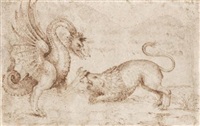Paolo Uccello
(Italian, 1397–1475)
Biography

Follower of Paolo Uccello
Portrait of a woman in side profile
Sale Date: May 27, 2021
Auction Closed
.jpg)
Paolo Uccello
BATTLE ON THE BANKS OF A RIVER, PROBABLY THE...
Sale Date: July 28, 2020
Auction Closed

Circle of Paolo Uccello
The Madonna and Child before a parapet with two...
Sale Date: April 6, 2006
Auction Closed

Follower of Paolo Uccello
A knight in armor on a grey horse
Sale Date: October 18, 2000
Auction Closed








